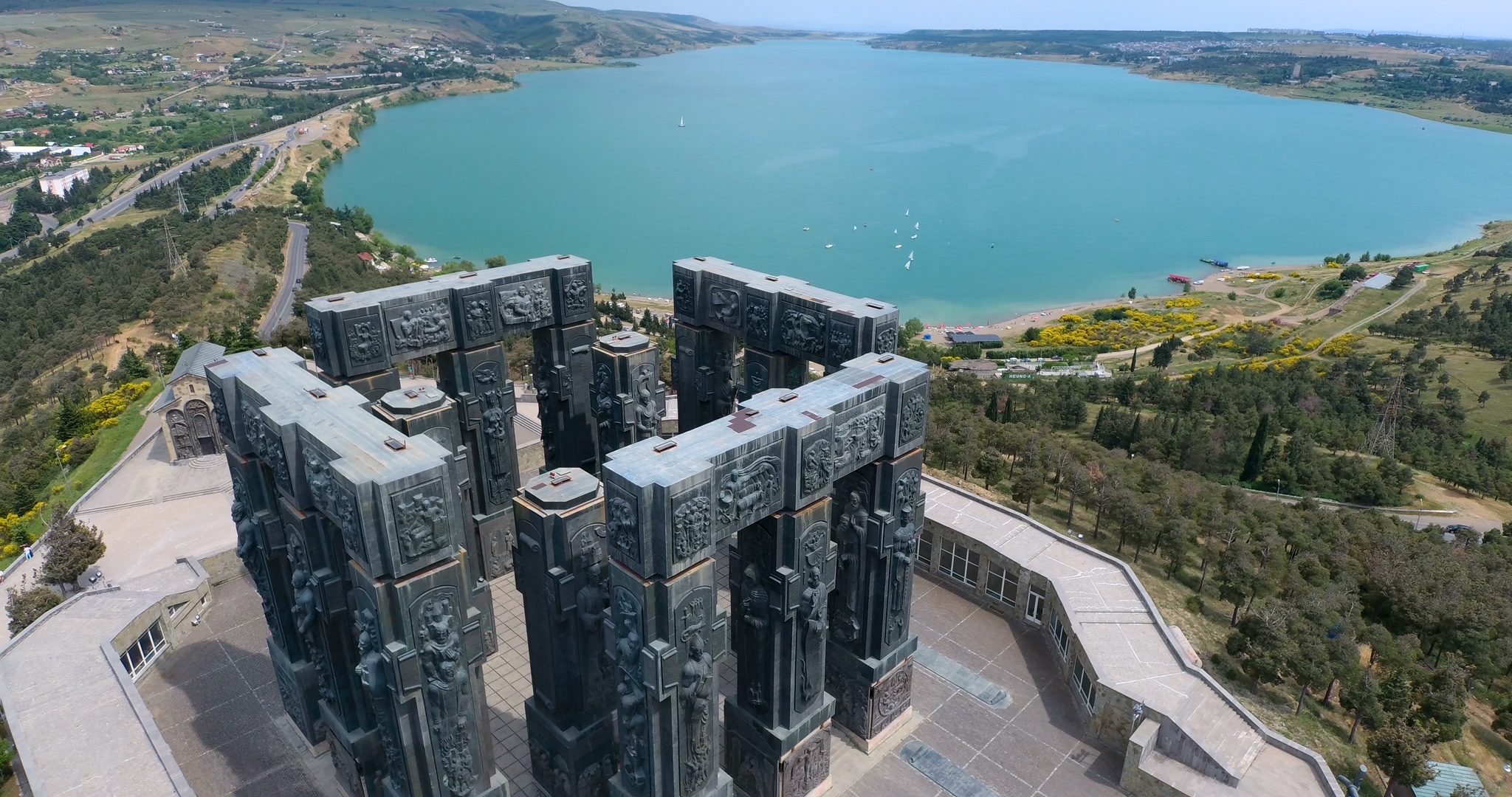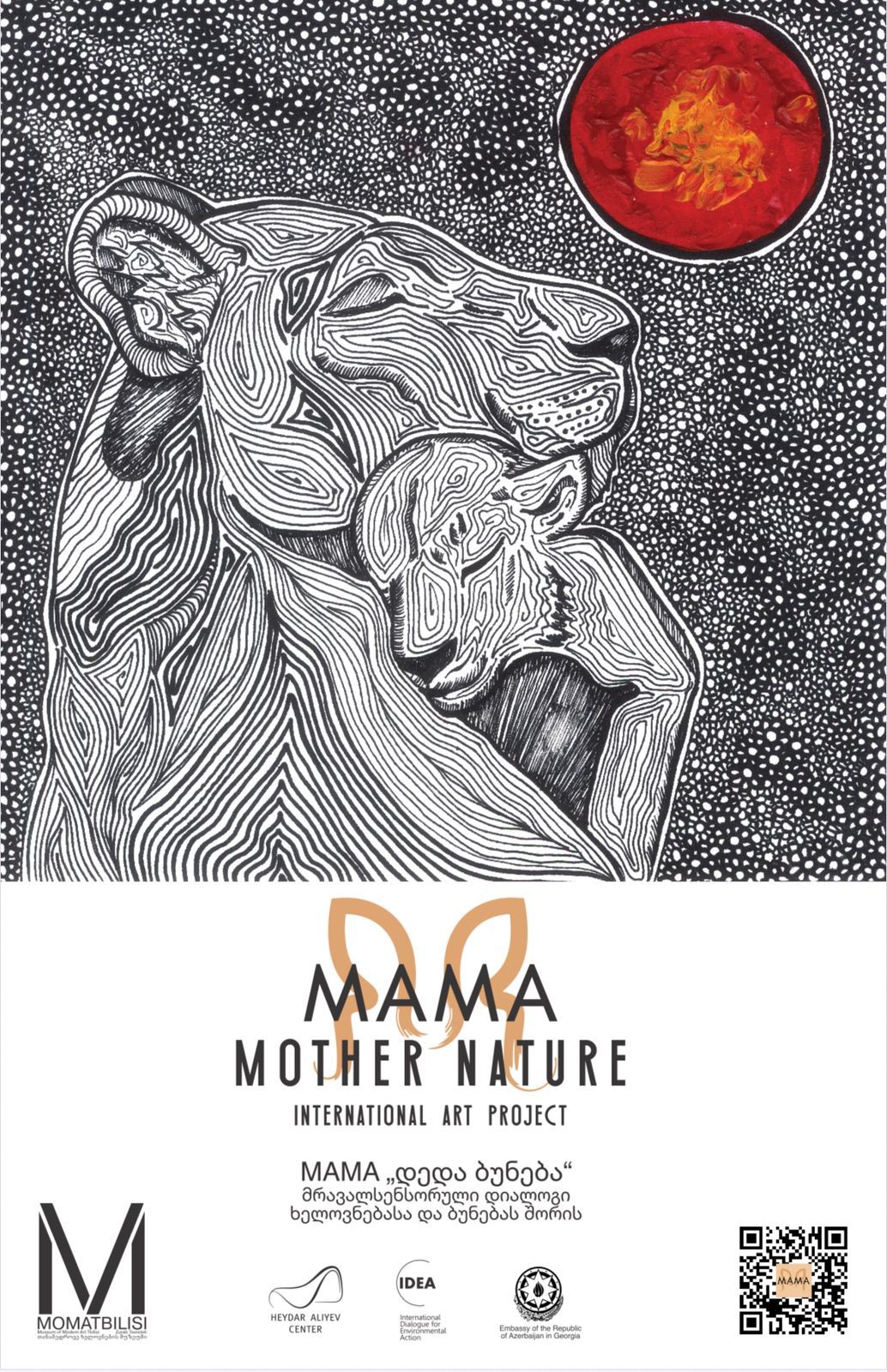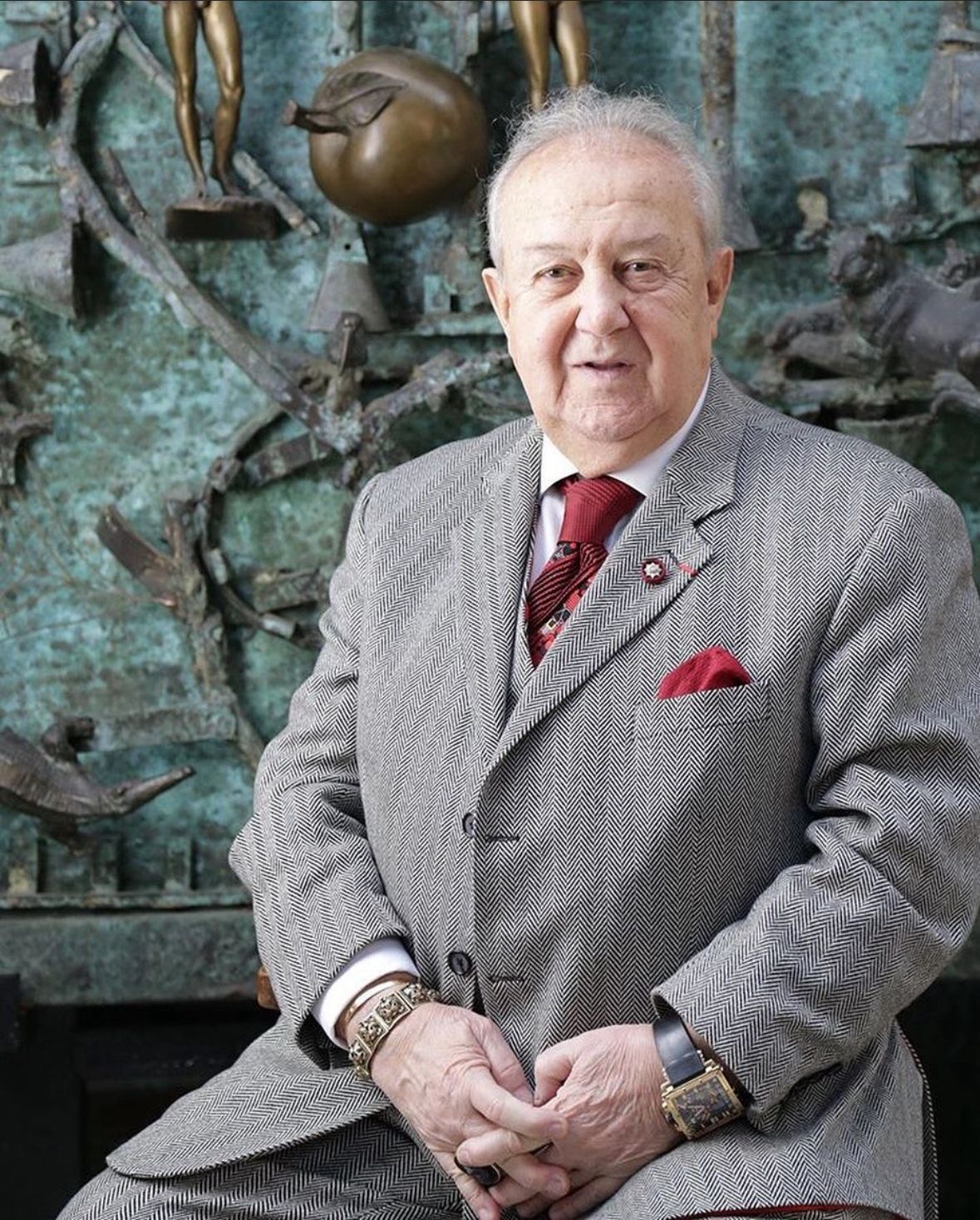
Chronicles of Georgia
In 1940-ies, Government of the Soviet Soviet Socialist Republic of Georgia decided to erect a colossal monument of Josef Stalin on the current Keeni mountain in Tbilisi. For this, they had even cut off the peak of the mountain. These happy news were reported to the Great Leader by the First Secretary of the Central Committee of Communist Party of Georgia : Comrade Stalin, your statue will be arising from earth with the first rays of the sun in the morning and in the evening, with the sundown, it will be back to its place! “Great- answered Stalin – only during the night time, it will be you standing there instead of me…. So the idea of erecting the monument was effectively abandoned.
In the 1970-ies of the past century, artist Zurab Tsereteli had the idea of creating a monument dedicated to the history of Georgia. For this he searched for an appropriate location. At that time, Zurab Tsereteli was building for himself a house-studio on the hill in the Bagebi suburb of Tbilisi. From there, a beautiful view of the city was seen and the artist’s eyes were immediately caught by Keeni Mountain. He went there, looked around it and decided – he would construct the monument of the “History of Georgia” on the Keeni Mountain, by the Tbilisi Sea.
Nobody knows exactly as to why the Keeni Mountain was given this name. According to popular legend, it was because this was the place where improvised masked folk celebration Keenoba would be held. In any case, the name has stuck to the mountain and today it hosts the monument representing History of Georgia which has no analogue in the world. The monument has also been called a Georgian Stonehenge.
Zurab Tsereteli got his idea of the monument duringthe years 1974-1975, at the height of the Communist rule in Georgia. At that time it was totally unimaginable to have a monument of “History of Georgia” depicting historical personalities – Georgian kings, writers, eminent public figures but not a single representative of the Communist party leadership. However, through persistent efforts of the Artist, this bold initiative was destined to be fulfilled.
It is to note that the major contributing factor in Zurab Tsereteli’s formation as an Artist was his participation in ethnographical expeditions led by the founder of the Georgian School of Ethnography, Academician Giorgi Chitaia. “Ethnography is a central pillar of the national awareness and a living chronicle of wisdom, spiritual wealth and moral values, formed through tireless work and efforts of countless generations of Georgian people, which refine the morals and awake the ability of appreciating the ancestors’ heritage among today’s youth”- spoke Giorgi Chitaia.
Experience gained through ethnographical expeditions, thorough study of history, art, culture and way of life of Georgian people gave inspiration to the Artist for developing the hitherto unseen project.
So the works started. For assistance, Zurab Tsereteli applied to Georgian Academy of Science and as a result, poet-academician Irakli Abashidze, noted historian Roin Metreveli and other scientists joined in the work process.
Initially the Artist had decided to fulfill the monument in the form of swords stuck into earth on which Georgian kings would be depicted but finally, swords were replaced by Greek type columns. In the beginning of 1980-ies, the bronze model of the monument was already prepared. It consisted of two parts – the upper part represented significant episodes of the Georgians’ history and the lower part portrayed kings and other renowned historical personalities.
In 1980ies, the artist added Biblical themes to the monument, particularly scenes from the New Testament,which occupy major section in the complex. “I love God, love my homeland, my family, my profession - spoke Zurab Tsereteli – a man acquires nobleness only when his life creed steadfastly follows one principle – Love your God and love your neighbor. I have lived and worked with these ideals so far”. High relieves that are at the bottom of each column, describe stories that tell about the Biblical world.
In the first half of 1990-ies, due to hard and chaotic political and socio-economic situation in Georgia, works on the monument were suspended to be renewed only after 1996, when certain degree of stabilization was achieved in the country.
The monument complex leaves an indelibleimpression on the viewer: it is situated on 12ha of land, with exposition space occupying 10 thousand sq. metres. There are 16 columns erected with height of each column being 35 metres. Every single column is divided into three parts: at the lower section there are Biblical scenes represented, in the middle the distinguished Georgian Kings are portrayed and the upper part depicts important events from history of Georgia. From the above, i.e. from the bird’s view perspective, the monument has a shape of a cross. Similarly cross-shaped are also the frames to where images of kings and other renowned personalities are cut. Almost every high relief is accompanied with thematic verses by Irakli Abashidze which makes it more informative and significant.
In the middle of the monument complex there are placed the symbolic graves of those kings of Georgia who had passed away and are buried outside of Georgia. Years ago the artist intended to arrange a reburial here of the King Vakhtang VI from the Russian town of Astrakhan where he is buried. However due to various reasons this could not be achieved and therefore the present symbolic resting place for Georgian kings was created.
With this architectural-sculptural monolith that he created, Zurab Tsereteli through easily understandable plastics, sequence and the utmost accuracy has reflected and related the stages of the political, cultural and socio-economic development of Georgia from the ancient times and until almost present days.
Construction works of the monument at the Keeni mountain were frequently visited by the Patriarch of Georgia, Ilia II. He suggested to the artist the idea of building a three-span church of Annunciation to the Blessed Virgin Mary next to the monument. This is the only church in the world the inner walls of which are completely decorated with mosaic and enamel.
Over the course of 40 years, tremendous scope of works was completed utilizing 300 tons of bronze, 1500 metal constructions as well as 15 tons of copper for the enamel used for facing of the church’s interior.
Contrary to the popular proverb that says “one man in the field is no warrior”, this one individual, a talented and purposeful artist succeeded to make a certain breakthrough in the situation existing at that time. Through his creative work and particularly through his depiction of Georgia’s history chronicles, the artist confronted the totalitarian rule and even won over it. This was happening before the feature film “Repentance” by Georgian director Tengiz Abuladze came out in 1987 which, as they say, has contributed to changing of the political map of the world.
Even if Zurab Tsereteli would not create anything other than the monument of “History of Georgia”, through this sculpture that took on life in stone bronze, the artist would still hold his permanent and significant place in the history and culture of our country.
A famous Georgian artist Gibson Khundadze used to say: “I consider as an achievement of the monumental sculpture art the “History of Georgia” by Zurab Tsereteli which will stay for many years to come. It is a single body of an architectural monument which I believe is the greatest accomplishment of Georgia’s architecture…. this is the hymn dedicated to Georgia.

MAMA “Mother Nature”
August

Poets, Masks, Actors, Ghosts
April




